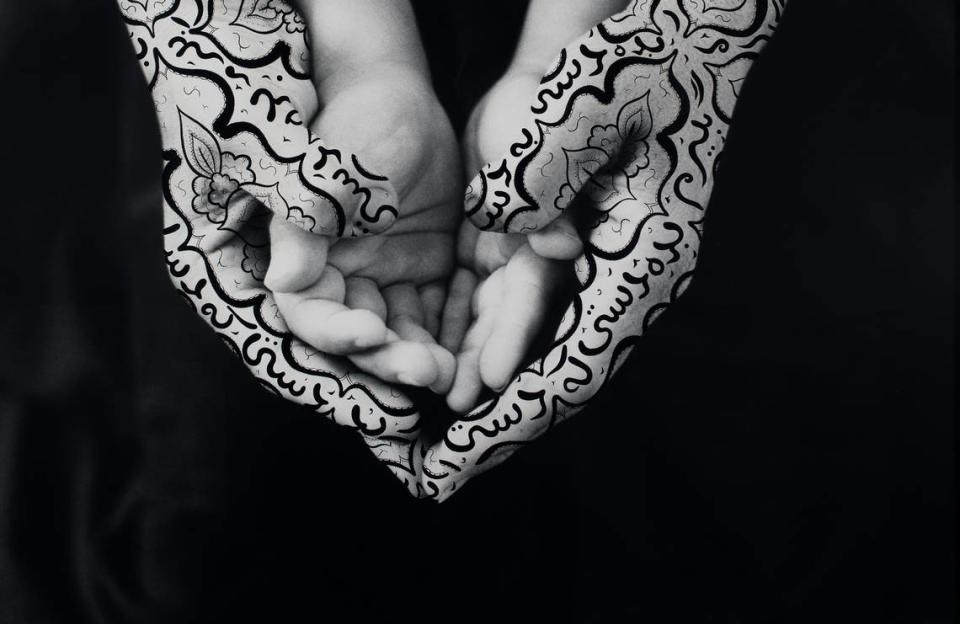An art icon in exile offers a unique retrospective at the Modern
It is impossible to separate Shirin Neshat’s life from her art.
Born in Iran, she left as a teen to study at the University of California at Berkeley in 1975. The Islamic Revolution and the Iran-Iraq War prevented her from returning home and she has lived in New York since 1983.
Neshat says she resumed work as an artist after a decade-long hiatus in the early ’90s with an urge to translate her experiences in exile into “a work of art that becomes a form of communication.”
Since then, her acclaimed works have been exhibited in museums all over the world, received countless accolades, and featured high profile collaborators like Natalie Portman and Philip Glass.
Her first major retrospective and largest exhibit to date, “Shirin Neshat: I Will Greet the Sun Again,” is on view at the Modern Art Museum of Fort Worth from February 28 through May 16.
Arranged chronologically, the show highlights Neshat’s three-decade career with eight immersive video installations and 230 photographs. The exhibit takes its name from a poem from Forugh Farrokhzad, a feminist poet who was controversial in Iran. Neshat’s works explore death, isolation, revolution, and separation by both nation and gender.
“I wanted to do something that was my own, with my own identity, that kept my relationship alive with Iran,” Neshat said. “I view the world outside of my country with huge nostalgia and an unresolved situation. I developed these conceptual visual strategies.”
Ed Schad is the exhibit’s curator from The Broad in Los Angeles, where it was first shown in 2019 and 2020. He realized Neshat’s work was more relevant than ever when he started organizing the show in 2016.
“The talk in the air was very much about sanctuary cities and immigration to the United States in general,” Schad said. “Over the decades she has made work, her story has become more and more central to our story here in this country.”
The show begins with Neshat’s most famous work, the “Women of Allah” series of photographs taken over four years beginning in 1993. It explores political unrest and war with large black-and-white images of Iranian women, mostly Neshat herself, that are both alluring and frightening. These subjects brandish firearms and their skins are tagged with poems written in Persian calligraphy. The words convey the thoughts and emotions of the subjects and the exhibit includes some of the poems translated in English from Farsi.

“Her entire body of work really gets at the private personal experience inside of tectonic global forces,” Schad said. “She’s very focused on those individual political choices that each and every one of us have to make. She really tries to encompass a lot of different voices inside of these global movements.”
Video works from the late ’90s and early 2000s—like “Rapture,” “Turbulent,” and “Passage”—capture Neshat in transition. She stops appearing in her work and men are included more frequently. A focus on buildings and landscapes underscores a shift to highlighting local cultures. She turns her lens to experiences in exile from people of all ages with many different ethnicities. Neshat started interviewing her subjects and her work became more journalistic, sometimes similar to making a documentary.
After experiencing 9/11 firsthand, she chose to create her 2002 body of work, “Tooba,” in Mexico to offer a global response to the disaster. The exhibit also includes work made in Morocco, Turkey, and Egypt. But Neshat turned her lens to the United States for the first time with her latest work included here from 2019, “Land of Dreams.” With a photography series featuring over 100 portraits of Americans and a two-screen video, she was reacting to the increased paranoia and suspicion towards immigrants she was seeing during the Trump presidency.
“For the longest time I always thought I wasn’t entitled or licensed to make work about America because I wasn’t born here,” Neshat said. “But when Trump came into power and the policies about immigration began to change there was just something, I guess the anxiety in me, that felt it was time. I felt that making a work was my way of protecting what I think is great about this country, the diversity. To me it’s a portrait of this nation, what America looks like to me.”
Last year, she shot an upcoming feature film based on “Land of Dreams” starring Matt Dillon and Isabella Rossellini that is currently in post-production. The original video on view at the Modern is a surrealist film made in New Mexico with a story about an Iranian photographer taking photographs of locals and asking subjects about their dreams.
“With dreams you free yourself from direct judgment and censorship,” Neshat said. “You can still make work that is politically relevant and pointed, but in dreams we are innocent. The more I let go of reality and went deeper into the human psyche, the more the work became universal and timeless.”

